|
K
E L P
ABOUT - HOME -
A-Z INDEX
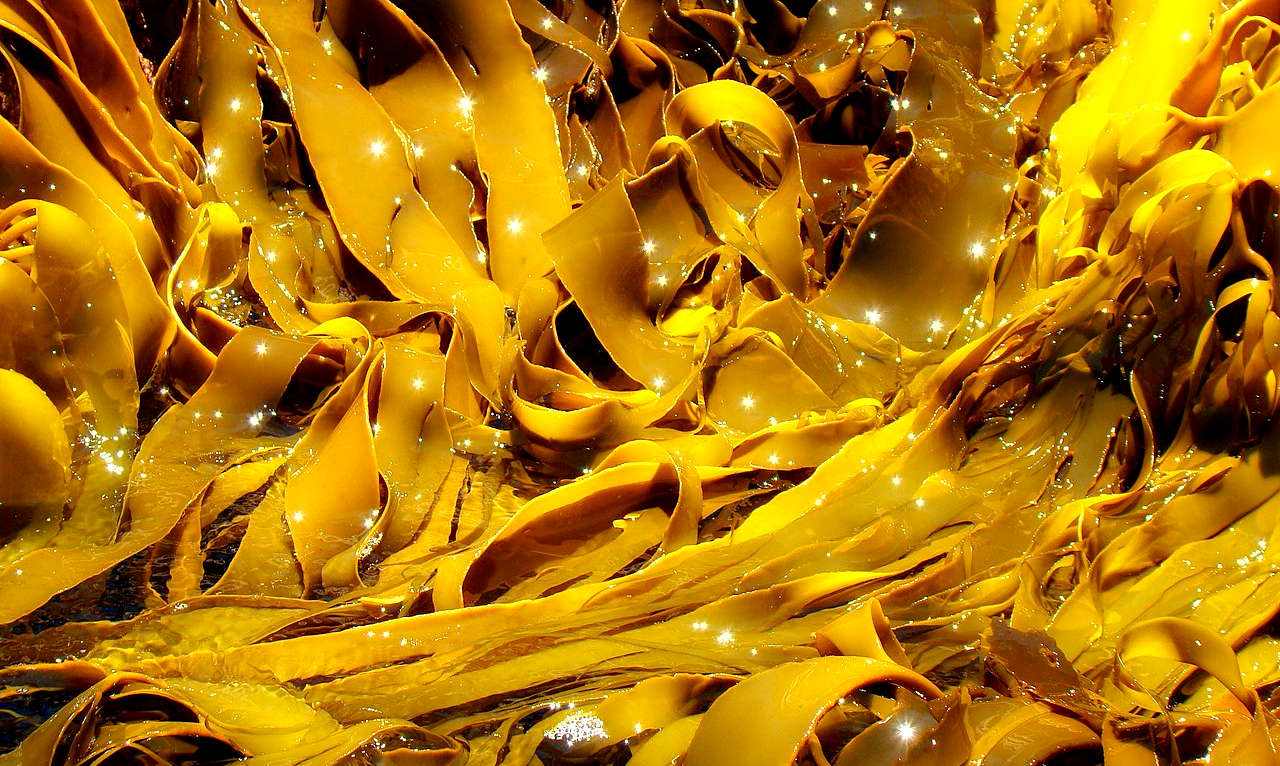
ED
- An every day sight that we take for granted.
Giant kelp can be harvested fairly easily because of its surface canopy and growth habit of staying in deeper water.
This species and other seaweed, or macro algae,
are very important in producing oxygen and locking up carbon
dioxide. They might also be, or become, a source of food,
fuel and medicines.
Kelp ash is rich in iodine and alkali. In great amount, kelp ash can be used in soap and glass production. Until the Leblanc process was commercialized in the early 19th century, burning of kelp in Scotland was one of the principal industrial sources of soda ash (predominantly sodium carbonate). Around 23 tons of
seaweed was required to produce 1 ton of kelp ash. The kelp ash would consist of around 5% sodium carbonate.
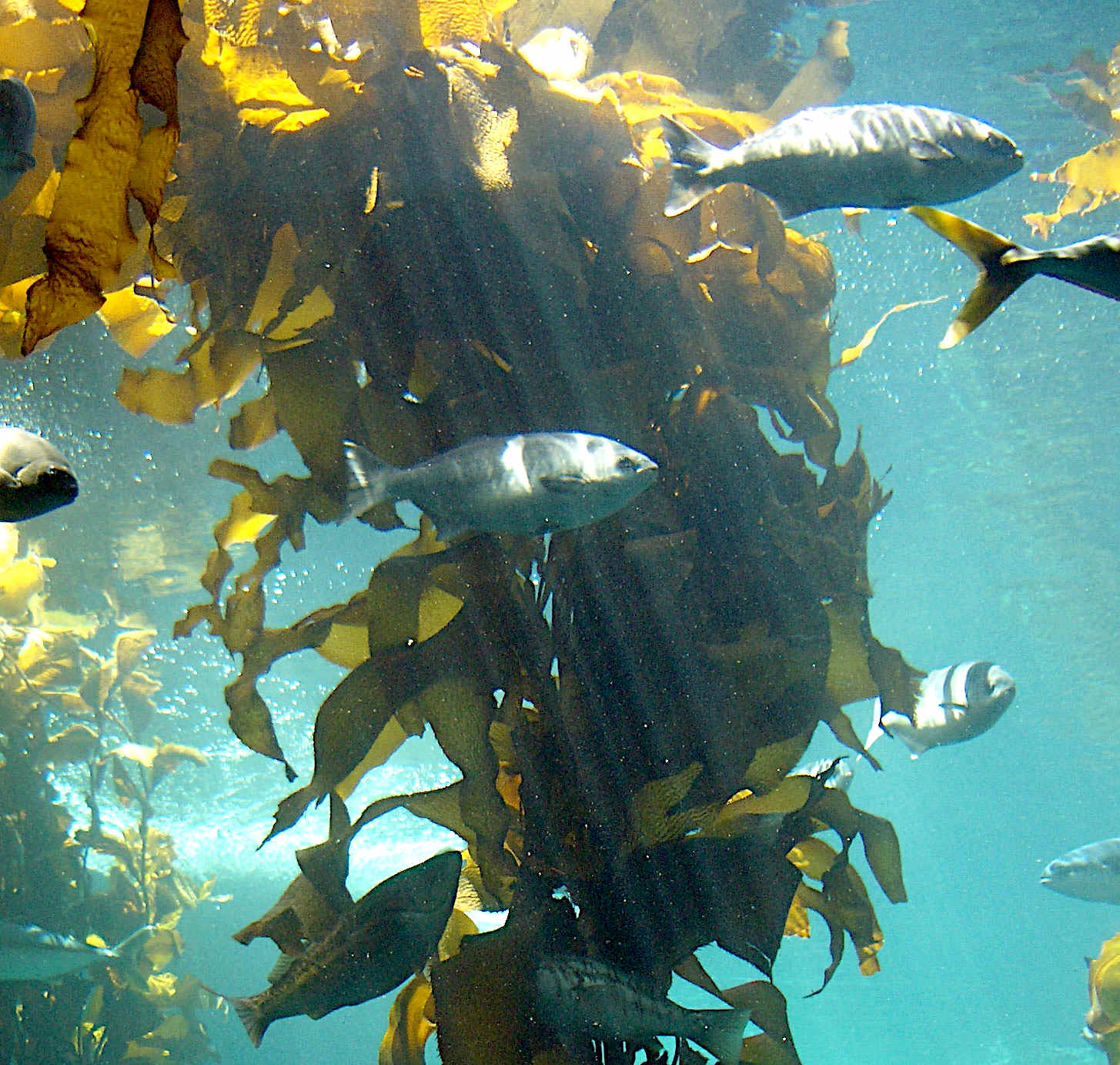
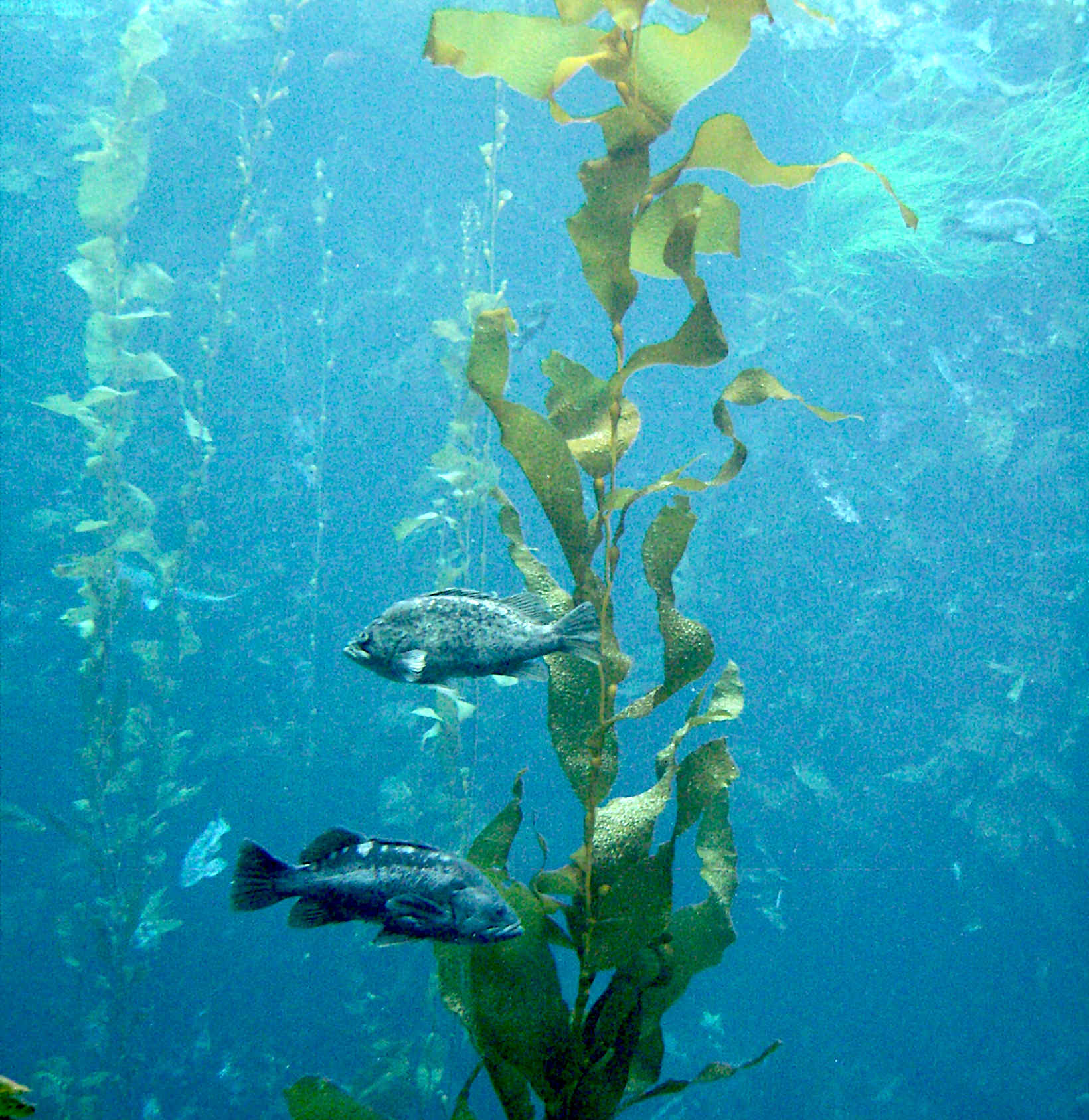
....
Once the Leblanc Process became commercially viable in Britain during the 1820s, common salt replaced kelp ash as raw material for sodium carbonate. Though the price of kelp ash went into steep decline, seaweed remained the only commercial source of iodine. To supply the new industry in iodine synthesis, kelp ash production continued in some parts of West and North Scotland, North West Ireland and Guernsey. The species Saccharina latissima yielded the greatest amount of iodine (between 10 and 15 lbs per ton) and was most abundant in Guernsey.
Iodine was extracted from kelp ash using a lixiviation process. As with sodium carbonate however, mineral sources eventually supplanted seaweed in iodine production.
Alginate, a kelp-derived carbohydrate, is used to thicken products such as ice cream, jelly, salad dressing, and toothpaste, as well as an ingredient in exotic dog food and in manufactured goods. Alginate powder is also used frequently in general dentistry and orthodontics for making impressions of the upper and lower arches. Kelp polysaccharides are used in skin care as gelling ingredients and because of the benefits provided by fucoidan.
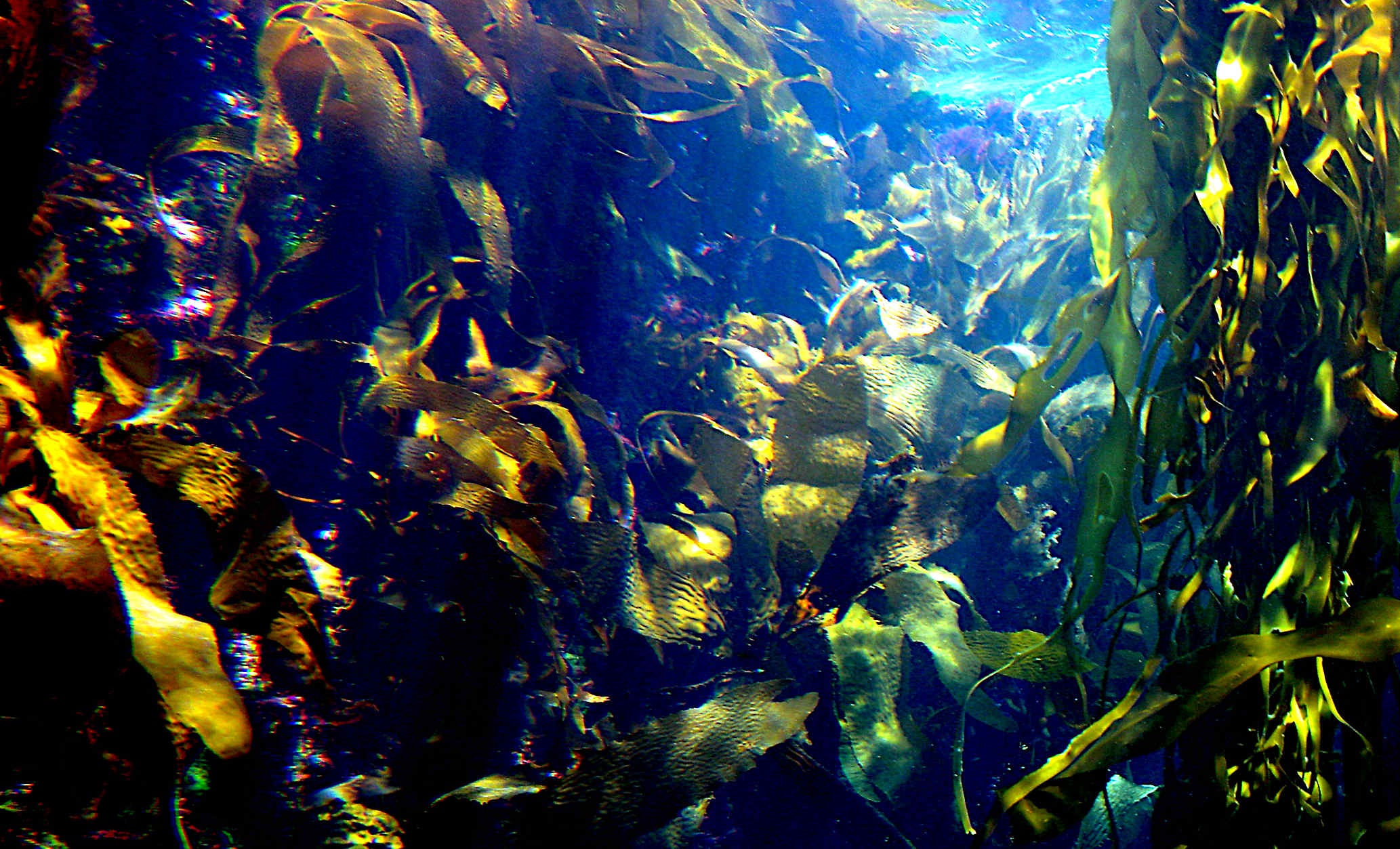
Dense
kelp forest
Kombu (昆布 in Japanese, and
海带 in Chinese, Saccharina japonica and others), several Pacific species of kelp, is a very important ingredient in Chinese, Japanese, and Korean cuisines. Kombu is used to flavor broths and stews (especially dashi), as a savory garnish (tororo konbu) for rice and other dishes, as a vegetable, and a primary ingredient in popular snacks (such as tsukudani). Transparent sheets of kelp (oboro konbu) are used as an edible decorative wrapping for rice and other foods.
Kombu can be used to soften beans during cooking, and to help convert indigestible sugars and thus reduce flatulence.
In Russia, especially in the Russian Far East, and former Soviet Union countries several types of kelp are of commercial importance: Saccharina latissima, Laminaria digitata, Saccharina japonica. Known locally as "Sea Cabbage" (Морская капуста in Russian), it comes in retail trade in dried or frozen, as well as in canned form and used as filler in different types of salads, soups and pastries.
Because of its high concentration of iodine, brown kelp (Laminaria) has been used to treat goiter, an enlargement of the thyroid gland caused by a lack of iodine, since medieval times. An intake of roughly 150 micrograms of iodine per day is beneficial for preventing hypothyroidism.
Over consumption can lead to kelp-induced thyrotoxicosis.
In 2010, researchers found that alginate, the soluble fibre substance in sea kelp, was better at preventing fat absorption than most over-the-counter slimming treatments in laboratory trials. As a food additive, it may be used to reduce fat absorption and thus
obesity. Kelp in its natural form has not yet been demonstrated to have such effects.
Kelp's rich iron content can help prevent iron deficiency.
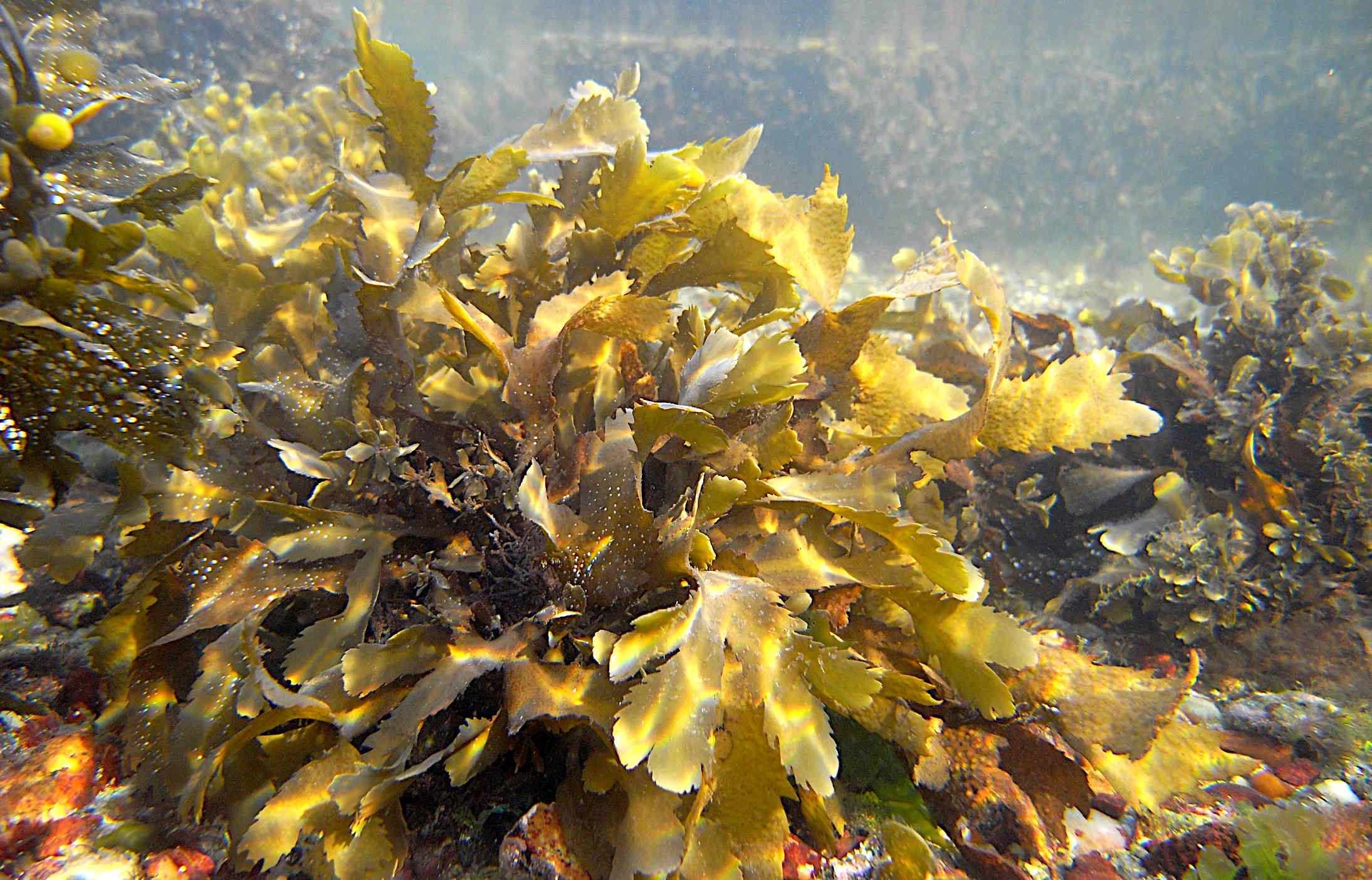
Seaweed
Commercial production of kelp harvested from its natural habitat has taken place in Japan for over a century. Many countries today produce and consume laminaria products; the largest producer is China. Laminaria japonica, the important commercial seaweed, was first introduced into China in the late 1920s from Hokkaido, Japan. Yet mariculture of this alga on a very large commercial scale was realized in China only in the 1950s. Between the 1950s and the 1980s, kelp production in China increased from about 60 to over 250,000 dry weight metric tons annually.
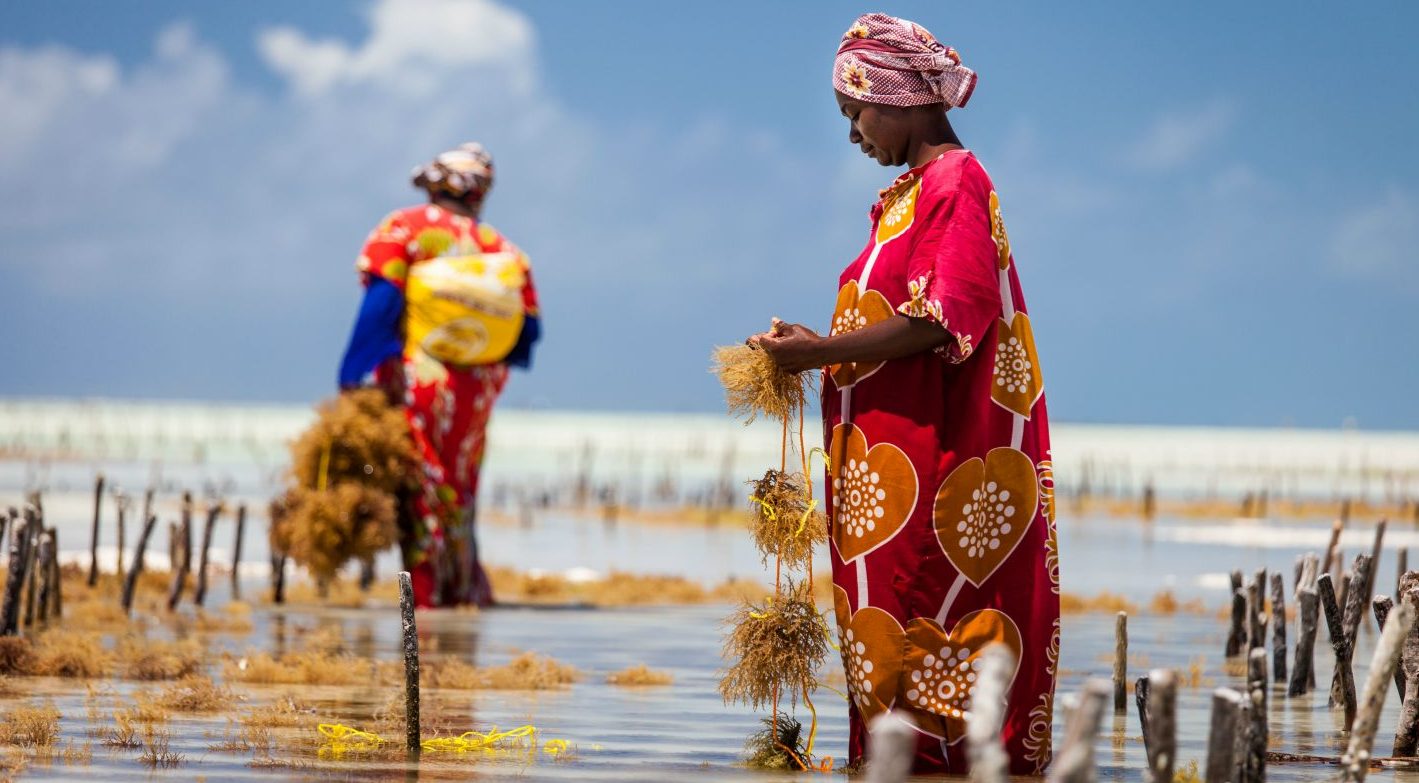
Cultivated
crops
Kelps are large brown algae seaweeds that make up the order Laminariales. There are about 30 different genera. Despite its appearance, kelp is not a plant - it is a heterokont, a completely unrelated group of organisms.
Kelp grows in "underwater forests" (kelp forests) in shallow oceans, and is thought to have appeared in the Miocene, 5 to 23 million years ago. The organisms require nutrient-rich water with temperatures between 6 and 14 °C (43 and 57 °F). They are known for their high growth
rate - the genera Macrocystis and Nereocystis can grow as fast as half a metre a day, ultimately reaching 30 to 80 metres (100 to 260 ft).
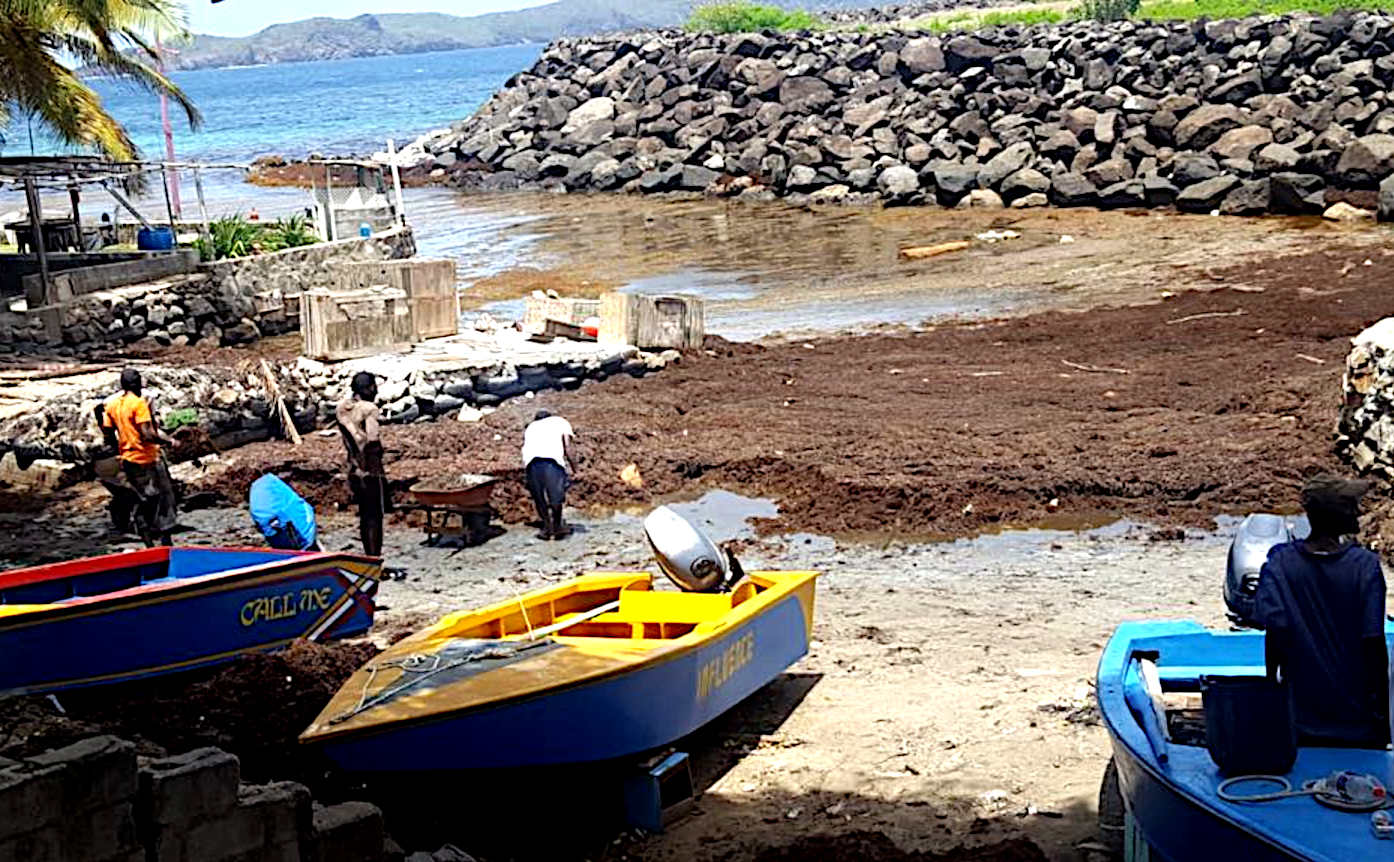
Sargassum
washed up on the beach Grenadines, Caribbean islands.
Through the 19th century, the word "kelp" was closely associated with seaweeds that could be burned to obtain soda ash (primarily sodium carbonate). The seaweeds used included species from both the orders Laminariales and Fucales. The word "kelp" was also used directly to refer to these processed ashes.
In most kelp, the thallus (or body) consists of flat or leaf-like structures known as blades. Blades originate from elongated stem-like structures, the stipes. The holdfast, a root-like structure, anchors the kelp to the substrate of the ocean. Gas-filled bladders (pneumatocysts) form at the base of blades of American species, such as Nereocystis lueteana, (Mert. & Post & Rupr.) to hold the kelp blades close to the surface.
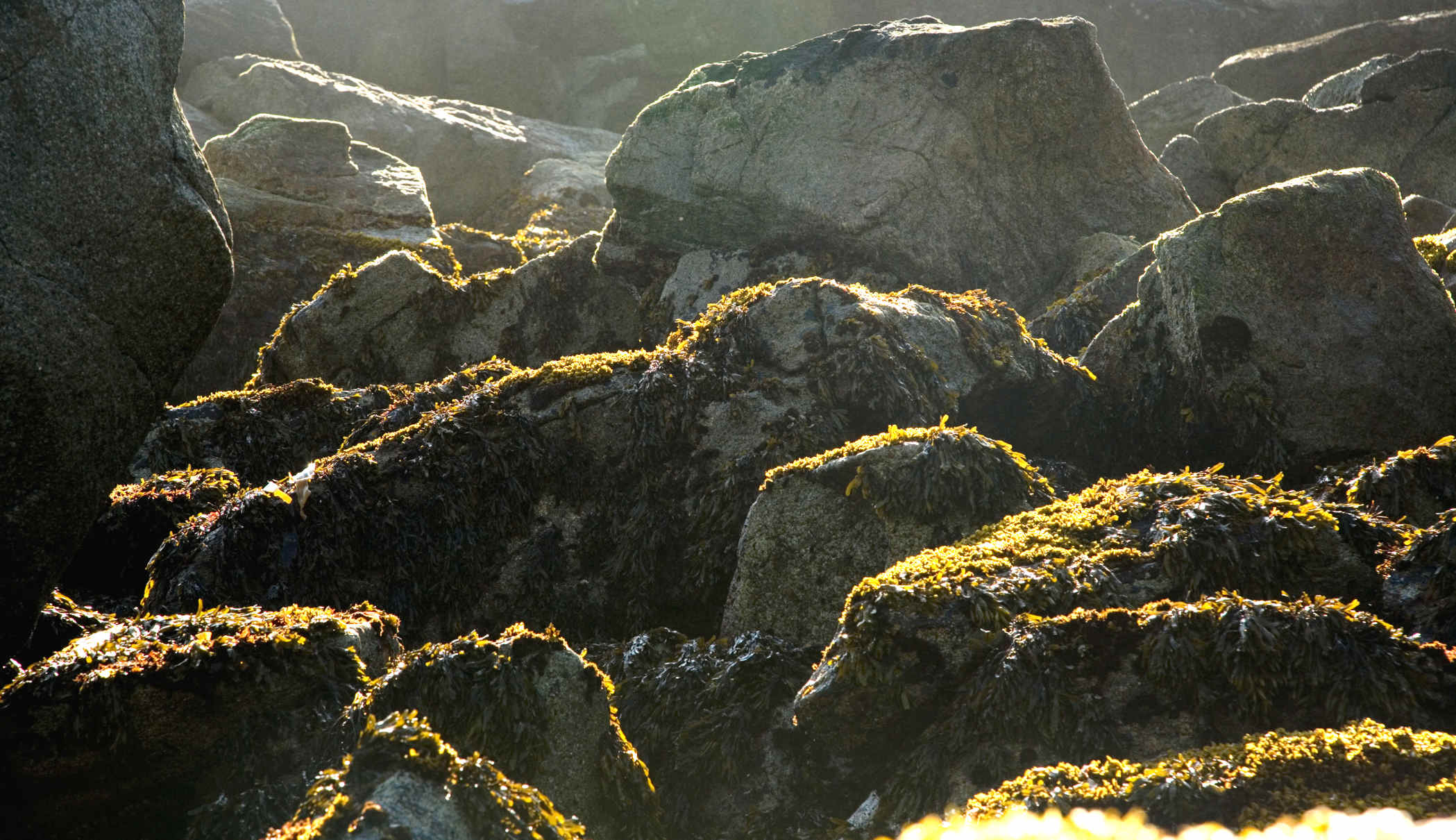
....
KELP FORESTS
Kelp may develop dense forests with high production, biodiversity and ecological function. Along the Norwegian coast these forests cover 5800 km2, and they support large numbers of animals. Numerous sessile animals (sponges, bryozoans and ascidians) are found on kelp stipes and mobile invertebrate fauna are found in high densities on epiphytic algae on the kelp stipes and on kelp
holdfasts. More than 100,000 mobile invertebrates per square meter are found on kelp stipes and holdfasts in well-developed kelp forests (Christie et al., 2003). While larger invertebrates and in particular sea urchins Strongylocentrotus droebachiensis (O.F. Müller) are important secondary consumers controlling large barren ground areas on the Norwegian coast, they are scarce inside dense kelp forests.
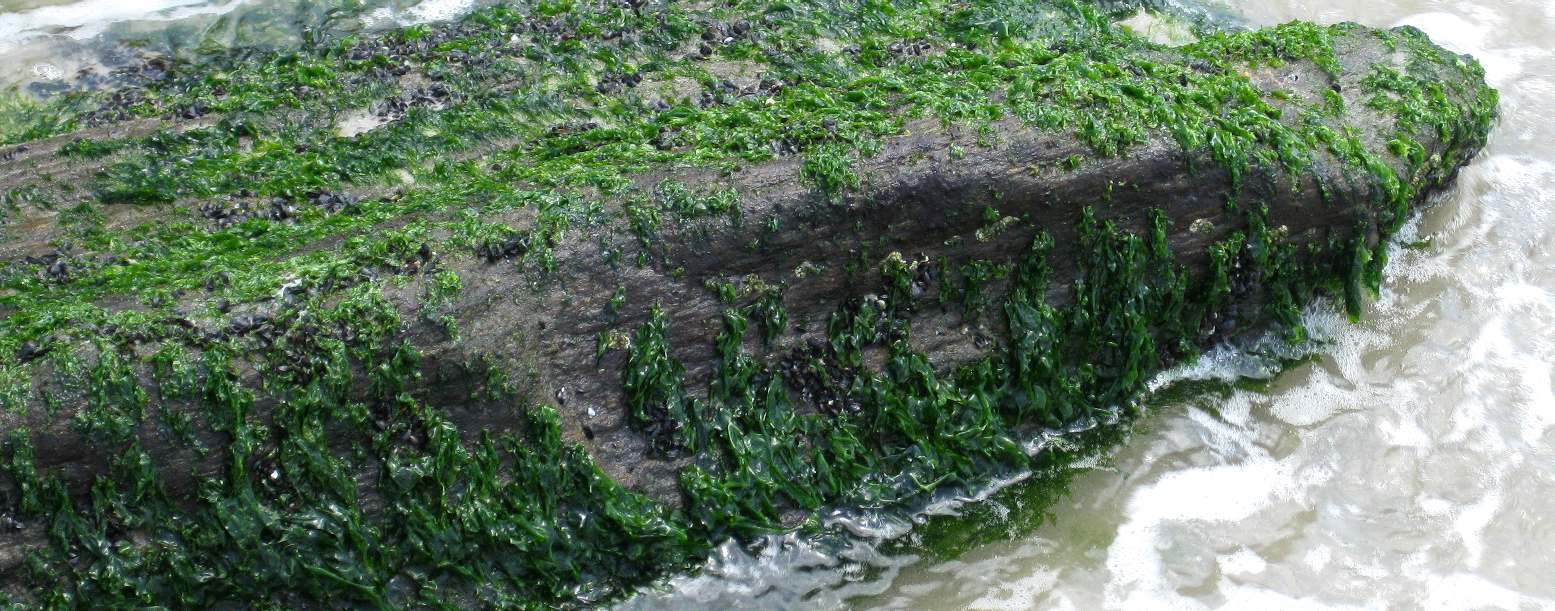
ATLANTIC
SEAWEED - An every day sight that we take for granted.
BIODEGRADABLE
STRAWS & CUPS
Kelp
can be made into straws
cups and plates to replace single
use plastic packaging.
LINKS
& REFERENCE
https://ww
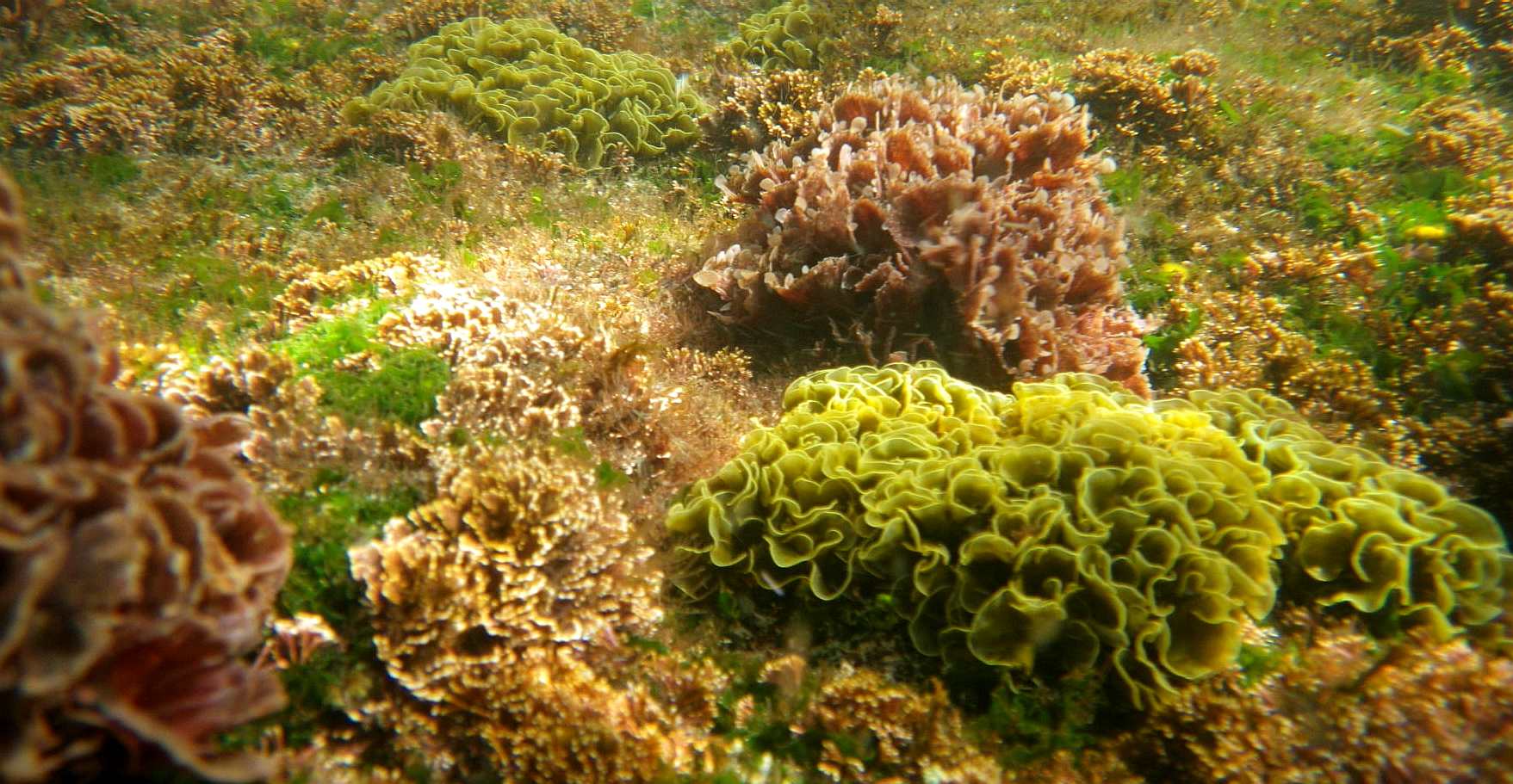
IN
ABUNDANCE - Seaweed as a bed on the Australian coast.
BIOMASS - BUILDING
MATERIALS - CANCER
TREATMENTS - CLOTHING
& SHOES - CO2
SEQUESTRATION
COSMETICS
- FERTILIZERS - FOODS - MEDICINES - MINERALS - PACKAGING - SUPPLEMENTS - VITAMINS
Anchovies
| Bass
| Bream
| Catfish
| Clams
| Cod
Coley
| Crabs
| Crayfish
| Eels
| Grouper
| Haddock
| Hake
| Halibut
| Herring
| Jellyfish
Krill
| Lobster
| Mackerel
| Marlin
| Monkfish
| Mullet
| Mussels
| Oysters
| Perch
| Piranha |
Plaice
| Pollock
| Prawns
| Rays
| Sablefish
| Salmon
Sardines
| Sargassum | Scallops
| Seaweed | Sharks
| Shrimp
| Skate
| Sole
| Sprat
| Squid
| Sturgeon
| Swordfish
| Trout
| Tuna
| Turbot
| Whiting
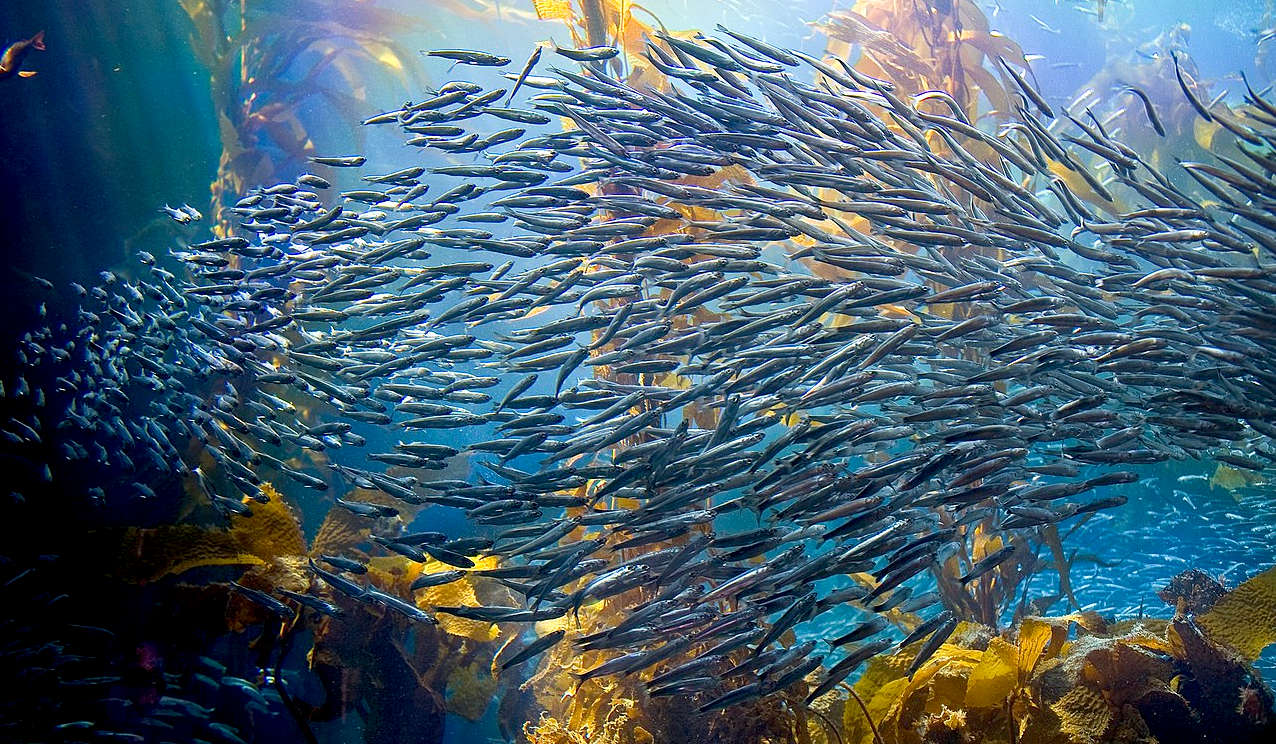
This
website is provided on a free basis as a public information
service. Copyright © Cleaner
Oceans Foundation Ltd (COFL) (Company No: 4674774)
2022.
Solar
Studios, BN271RF, United Kingdom.
COFL
is a charity without share capital.
|







